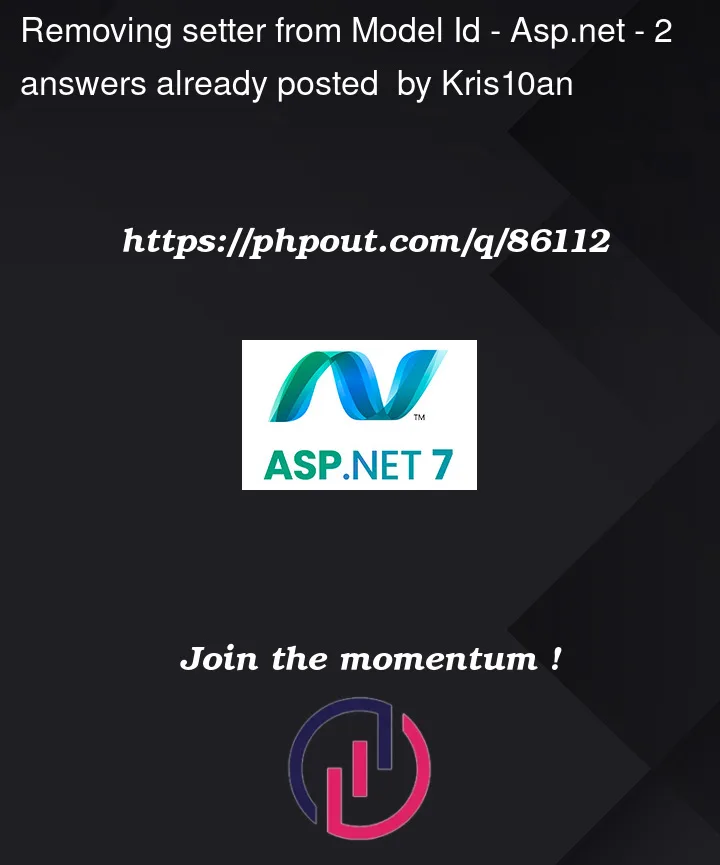Following this tutorial from Microsoft gives me this Model for a TodoItem:
namespace TodoApi.Models
{
public class TodoItem
{
public long Id { get; set; }
public string? Content { get; set; }
public bool Completed { get; set; }
}
}
I do not want the user to be able to update or set the Id property. My colleauge solved this by creating a separate model for posting and putting TodoItems – following some tutorial online I think. My idea was to just remove the setter from the property, and after testing the only error I got was that I had to set a PrimaryKey for the Model. I ended up with this:
using Microsoft.EntityFrameworkCore;
namespace TodoApi.Models
{
[PrimaryKey(nameof(TodoItem.Id))]
public class TodoItem
{
public long Id { get; }
public string? Content { get; set; }
public bool Completed { get; set; }
}
}
The code worked, but since I am new and learning I want to know if this is a no-no or if this is okay to do. I cannot find anyone else doing the same online so I thought I’d ask here. Thanks in advance 🙂
Edit: I now see that the put method returns a 400 Bad Request, so I gues that means it’s a no-no? What would be the best way to solve this issue, is it to create a separate model? Or maybe define a setter which doesn’t do anything?




2
Answers
You could make a constructor to set initial values and make the setter for Id private.
Edit
You could make the setter not actually set:
In this case you would probably not get an error because there is a setter but it would also not change the Id.
in practice, we use a readmodel that has private set for its properties to avoid unwanted state changes and a write model with an accessible set that updates or creates the persisted data, you can also pass by a viewModel that exposes only the state of your entity and a DTO to CRUD your data